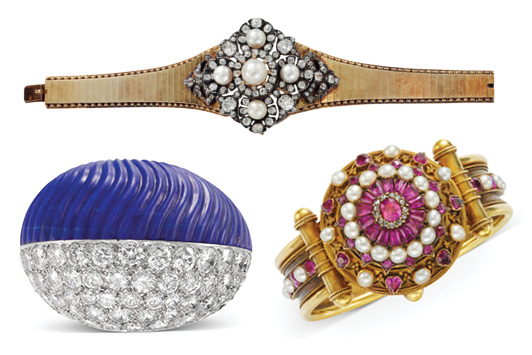 What’s the first step in opening an estate jewelry department?
What’s the first step in opening an estate jewelry department?
Top of the list is understanding what you have. Knowing your merchandise helps you build trust with your clients. There are pieces out there that have been adapted and changed, stones may have been switched out and signatures put on, and a whole host of other things. You need to study the different periods so you know what you are looking at.
What is the best way to learn about estate jewelry?
Get to see as much as you can; go to the jewelry shows in Miami, Las Vegas or New York in the US, or those in Hong Kong or Geneva. Get to know dealers and find people you can trust. Handling pieces in quantity and seeing how they’re priced will help you to compare the good, the bad and the ugly. Subscribe to auction catalogs, primarily Christie’s and Sotheby’s, and study them and the price estimates. For more important pieces, you’ll find helpful information such as the history of the period, the jeweler and the stone.
Is it better to stock different eras or just one?
What you stock depends on your client base. I have been in the business for such a long time, and I have a broad range of clients all over. I carry a full range across the board, whether it’s antique or Belle Époque, Art Deco or late 20th century. But if you are in a specific area or dealing with a certain age group, you have to understand what people are looking for. It’s important to know what the trends are: what’s in fashion, how are people wearing jewelry, what are they wearing.
What are the best ways to source merchandise?
Buying from reputable dealers at trade shows is a solid start. It’s usually a straightforward transaction: They’re offering a piece for $10,000, say; you want to spend $8,000; you settle on $9,000. When you’re dealing with a private seller, it’s not always as black and white. While you want to be fair in terms of the market for that piece, you don’t want to overpay. If it is something rare and unusual, you can get carried away and end up spending too much. If you are looking at mid-range, and you’re disciplined, there are opportunities at auction, but there are some caveats. There will be a buyer’s premium added to the price you bid. Moreover, this is a very public arena. With higher-end pieces, clients can find on the internet the price you paid. No matter how well you bought an item, some people will feel that if you ask for more, you’re being greedy.
Is it better to buy on consignment or to own pieces?
There aren’t any rules. I know there are people who work largely on consignment, and there are those who prefer to own the inventory. The majority of what I have here, in volume terms, is owned by me. If you have put your own money up front to get something, that can give a buyer confidence that it must have value.
Image: Tony FalconeArticle from the Rapaport Magazine - January 2020. To subscribe click here.